Independence. In many Westernized societies it is the end goal of our parenting efforts. We want our children to be independent. But what does that mean?
I often hear parents who have done practices like crying-it-out (CIO) say that their children are more independent for it. Whether it’s the mistaken belief that their children have learned to self-soothe or simply that they see their children as independent and attribute it to CIO, parents are adamant that their leaving their children to cry (day or night) has made them independent. And this is not just in infancy, but toddlerhood as well.
I’m going to say something that may at first offend, but please bear with me… It is quite possible that yes, they have “helped” their children be more independent. The question as I see it, is what type of independence have these children learned?
‘Children are not resilient; they are adaptive. In other words, they don’t simply ‘bounce-back’: they re-shape themselves.’ – Robin Grille
If we take Dr. Grille’s view, which I do, it’s important to think about how our children shift and change in response to our actions towards them. If we think of the independent child who became so because of methods like CIO, how have they re-shaped?
To answer this, let’s take a step back and look at what humans have done historically for the vast majority of human history. Anthropologists have studied child rearing practices in all types of traditional societies from hunter-gatherer bands to farming communities to chiefdoms. In all of them, yes all, co-sleeping is the norm. Babies and children do not sleep separately from their parents. One could argue it’s a matter of space, but that doesn’t seem to hold water as even when space is not an issue, these same sleeping arrangements ensue. Furthermore, in these traditional societies, a child’s cry is promptly responded to – even when the cry poses no danger to the tribe. So, considering this is how humans have lived and babies have been treated for around 98% of human history, I think it’s fair to consider that the “norm” for what babies biologically expect.
What do these children look like? Well, there’s going to be mass variability due to the myriad other differences between these traditional societies, but one thing that does seem to stand out is that these children, by age 10, are truly independent. The type of self-sufficient independent that we believe our children could never be at that age. They are very good caretakers of children (so much so that they are experienced and competent parents in their early teenage years), they can lead foreigners on treks through woods and far from home for extended periods of time, and many of them are capable gatherers and/or hunters in their own right. However, there is always the village that they can approach for help, something that they do when necessary.
This last bit is where I propose we see a large difference in the types of independence forged by traditional or biologically normative child rearing behaviours and some of our modern counterparts. Quite clearly there are many differences that contribute to this difference in independence, but it is difficult to argue that a child does not need to feel safe and secure in order to develop this type of secure independence. That is, child rearing practices that enable a baby and toddler to feel safe and responded to will lead children to be more confident, even in modern societies. And nighttime is one of those periods.
So what is the exact distinction here? Well, I like to think of it framed as independence through struggle and independence through support. And they can look very different despite both being forms of independence.
|
Independence through Support |
Independence through Struggle |
| Here is the child who is responded to regularly at night in infancy and toddlerhood and childhood. This child learns that she is safe and then when she is scared, someone will come and help her regulate her emotions. From this social regulation she will eventually learn about her own emotions and will eventually (though not for some years) learn to regulate them herself most of the time. And she will do so out of calmness and security because she will know that if she cannot regulate her emotions, she can safely fall back to others to help her.As an adult, she will be confident and feel secure when she faces challenges. However, she will be willing to ask for help when needed and accept the kindness of others to help her without believing she will be turned away or treated cruelly. And when that does happen, she treats it as an anomaly, continuing to face the world as though she fits in there and that it will welcome her. She does well in life – good grades, good university, good career – and finds herself in meaningful relationships with others, including her partner, her friends, and her family. | Here is the child who was left alone to “self-soothe” or to teach independence when she was unable to physically do so herself. She learns that there are scary times and that you cannot depend upon others to be there for you. Her ability to regulate her own emotions will be stunted, despite this regulation often being the reason adults left her alone in the first place. When she is able to externally regulate her emotions, it is questionable if she has actually internally regulated them as well.As an adult, she may seem independent, but it is the independence that comes from fighting. She views the world as her against it. Trust no one and know you have to do everything for yourself. When she faces challenges, she does not expect that any help would be given, or if it was given, there would be a downside to it. So she doesn’t ask and must face her challenges alone. She is able to forge ahead and does well – good grades, good university, good career – yet she struggles in relationships. She is so fiercely independent that the ability to truly bond with others becomes difficult. She has strings of meaningless relationships, struggling to figure out why she is unable to commit to others, or why they cannot commit to her. |
Though there are obviously lots of variables at play and these are just examples, they are examples based on what we know about children’s emotion regulation and infants’ response to CIO (you can read more on this here). Oddly, many parents seem to want to prepare their children for struggle by creating struggle. In a way, we have a self-fulfilling prophecy in that our treatment of children when young (including the ever popular idea of teaching them hardship because that’s what the world is like) is leading to the type of society we fear for them where they cannot expect help and assistance because we have far too many individuals who struggle to connect with others and offer this assistance. We end up with a horrible cycle in which parents, doing their best, aim to arm their children to face the world, but end up creating the world they are sad their children have to face.
Perhaps this puts too much on parents, but I don’t think so. I also believe we have hit a stage where parents feel more helpless than anything. They are told that they don’t matter, that their actions don’t matter. And that’s a horrible thing to tell a parent, never mind that it’s not really true. Yes, our children have their own personalities and temperaments that will dictate quite a bit about how they interact with the world. But parents can and do help shape these interactions, and for some children the effect is huge. And even in a world that we view to be unfair and cruel, being responsive still helps our children. And if you were unresponsive early, you CAN make changes to be responsive later and still instill this type of supportive independence in your children. It is not too late, and that’s something many parents struggle with in a culture that tells them they don’t really matter.
The challenge then is to get parents to realize that they can prepare their children for anything by being responsive. That they have an immense amount of power to shape how their children view and interact with the world. And most of all that they can help their child be independent, but that they should be careful about what kind of independence they want to see.

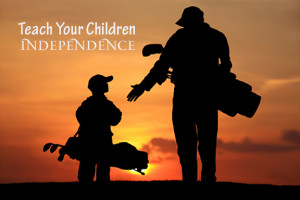
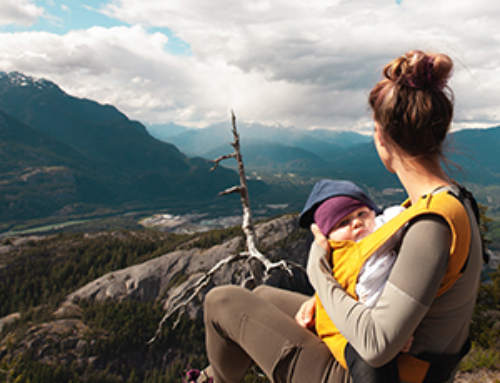
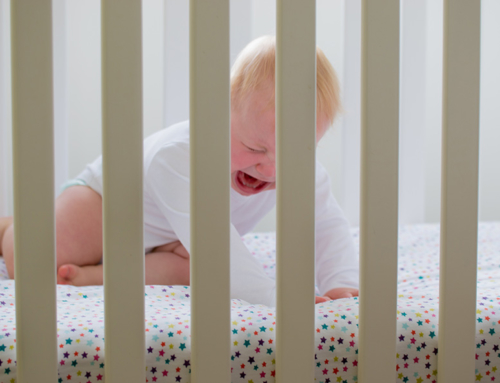

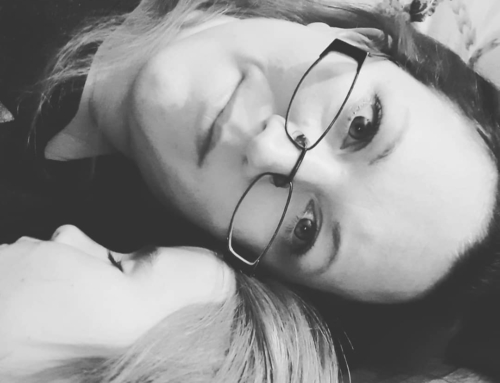
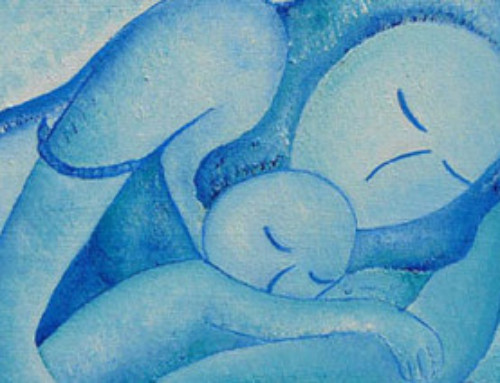
I find that when parents talk about independence and children, they are rarely talking about independence OF their children, but independence FROM their children.
I’m not in principle against any of what you say here; our almost-5-yr-old is still in our bed, and she is basically still breast-feeding to sleep (modulo the availability of milk).
My concern, as with the “observations”/tenets of evolutionary psychology more generally, is that the environment in which our evolutionarily sound/stable strategies (e.g. co-sleeping, extended breast-feeding, etc) developed is *radically* different from the current environment. It’s not a given for me that what was best then is necessarily best now.
And although your “Independence through {Support, Struggle}” is a nice rhetorical flourish, it’s really just story-telling. I think it’s really important that we who believe that this is the right/best way to raise kids be able to point to some solid evidence-based science. I know that there’s some out there, but it’s a nascent field, and we would do well to encourage our governments to support it.
Anyway…my $0.02…
F.
Fred, I would suggest you read up on the rest of the site, there’s a fair bit of research (not all new, going back 20+ years) on child independence and co-sleeping which supports that children will be as or more independent with that environment. Even in our current, modern world 🙂 But you’re right we need more research into other areas too!
Great post. You are awesome. 🙂
Thank you 🙂
My son is 15 months now and what I find very interesting is a lot of the more ‘mainstream’ parents I know with similar aged children struggle to actually allow their children any of the independence they may look for. My son is immensely physical and when we go to a playground/playcentre he mostly wants to do his own thing and doesn’t want my help, especially when there are older children around as he just wants to run around after them. I’ve shown him how to do certain things, like come down the slide safely, so when he runs off to the climbing frame and bats me away, I stay back and let him go. I keep an eye on him, as occasionally I see him looking around for me but once I wave at him he is reassured and goes back to his own play so mostly I trust him to take care of himself and he does. But I’m one of the only mothers who does this, many follow their (sometimes even much older) children about, controlling their play and interaction with the other children. I’ve heard a few comments about people ‘dumping’ their children at the climbing frame and not interacting with them aimed at me.
Yet I specifically go to safe spaces so that my son can enjoy the freedom he craves and the rest of the time he is with me always. We sleep together and will do until he is ready to sleep alone. He has never cried alone. When he was younger he was only ever put down when he was happy to be down and he’s never had any enforced routine. And now that he wants to strike out on his own sometimes, I give him a safe space to do that. But the parents who’s children sleep alone, who were left to CIO, who are in strict routines that suit their parents rather than the child, who insist everyone in their family is happier in their own space can’t seem to allow their children to actually be independent in the ways their child might actually want to be independent.
Yes! You’ve described the Western paradox. We force early “independence” when babies are most in need of being allowed to be dependent and then we steer them away from real “independence” as they age, sheltering them and keeping them from exploring their world and learning to feel confident in themselves! Then we wonder why we have a society of adults who fear failure to the point of it being crippling and who seem unable to make it independently!
Couldn’t say it better myself. This is my son as well!
Brilliant article as always!! Thank you for all the hard work you do!! Taking the time to share your wisdom and research is so appreciated!!
Thank you for your kind words 🙂 They are ALWAYS appreciated!
This is a compelling argument for the “attachment parenting”, that I was asked to read in order to understand why one of our good friends is doing it. I never comment on websites, but I feel compelled to do so this time. I must disagree, and encourage parents considering this technique NOT to do it. 1) I only know a handful of couples who do this type of parenting with their children, and they ALL have strained relationships (if not ruined marriages)- whether it’s due to lack of sleep, lack of intimacy, lack of attention to each other, etc.. Clearly, a strained relationship between a mother and father is not good for a child. 2) This is only a case series- but from personal experience- how my parents let me “Cry it out” and “figure things out”- plus how we have also let our children do the same: cry and LEARN to sooth, then adjust, or figure things out on their own- I can say with great confidence that you can have wonderful, successful, independent, loving children even if you put a baby in their own room when they are 3 months old, let them cry, throw them in the water and make them figure out how to swim, etc…. There’s a certain “toughness” that the human race (or for sure Americans) are losing generation by generation as we “coddle” or spoil our children more and more. As young people, our personalities are forged through a constant back-and-forth between our strengths and our flaws, our successes and our failures. If you help your child too much, they will never experience failure. Life is not easy. If you want to have successful children, you should prepare them for real life. If a child never learns to fail, he may never want to succeed.
And finally, 4) Health. Sleep health most specifically. If you are getting up to nurse or feed your baby/toddler during the night, YOU are interrupting your sleep and more importantly, your child’s sleep is interrupted. Yes, initially they are the ones that wake up first. But by letting them be, they learn to sleep though the night. By feeding them every time they fuss (or ask), you are just encouraging them to wake up to eat. Once a baby is 5-6 months old, barring illness or poor weight gain, they don’t need to eat during the night. And getting long periods of uninterrupted sleep are crucial for a child’s brain development, and the sanity of the parent.
If you want your kids to be socially awkward, afraid to be dropped off at school, feel entitled to everything, or want your husband to leave you because there is no longer any “relationship” with him- then this type of parenting is for you! I don’t suggest you go to the other extreme- of being a “Tiger Mom”, that’s pretty crazy too, if you ask me. But if you had to pick one or the other, I would lean towards the Tiger parenting. Though a nice “middle ground” is probably the best way to make a well-rounded child, teenager, and adult.
Could you provide citations for all of these very anecdotal (i.e., unscientific) thoughts?
A few pieces you may want to read up on:
https://gku.flm.mybluehost.me/evolutionaryparenting.com/the-life-lessons-fallacy/ (as you brought up the life lessons our babies need)
https://gku.flm.mybluehost.me/evolutionaryparenting.com/normal-infant-sleep-part-i/ (read all three parts)
https://gku.flm.mybluehost.me/evolutionaryparenting.com/educating-the-experts-lesson-four-self-soothing/ (very important for your understanding of “self-soothing”)
https://gku.flm.mybluehost.me/evolutionaryparenting.com/myths-and-facts-about-night-wakings/ (regarding the whole “should be sleeping through the night” thing)
I’d love to hear your science-based reply!
This article is spot on. I was an early 80’s baby who was left to cry it out and learned independence through struggle – at many points through childhood, not just infancy. The quote by Dr. Grille is absolutely true and I have felt that way throughout my life. The profile on independence through struggle was absolutely me and I have to thank my wonderful understanding husband who was able to break through many of my walls an inability to accept support and help – thank goodness he was so patient with me – nobody before him was. It has also caused conflict between me and his family initially because I didn’t understand their approach to helping us was coming from a place of love – to me it seemed controlling, even though it was not at all. Interestingly my mother and I do not have a close relationship and she has commented that she raised me to be too independent when really it was that I learnt I had to be independent because there was no one to rely on but myself. I am now a mother myself and follow AP/responsive parenting principles by breast feeding on demand, baby wearing, co-sleeping and so on and my mother is critical towards my parenting choices telling me I should have my son on a feeding schedule, that he needs to cry to exercise his lungs and so on. I think perhaps she feels she needs to validate her parenting choices by criticizing mine? I’m not sure. All I know is I feel so intuitively connected to my son and that I am consistently meeting his needs. I know what I am doing feels in harmony with my gut and heart and is also evidence-based!
I’m so sorry you had that early experience, but am so happy you’ve found healing through your husband and your relationship with your son! It goes to show that it never is too late to heal and move forward from events in the past.
Hugs.
[…] vale ler: https://gku.flm.mybluehost.me/evolutionaryparenting.com/the-independent-child/ […]